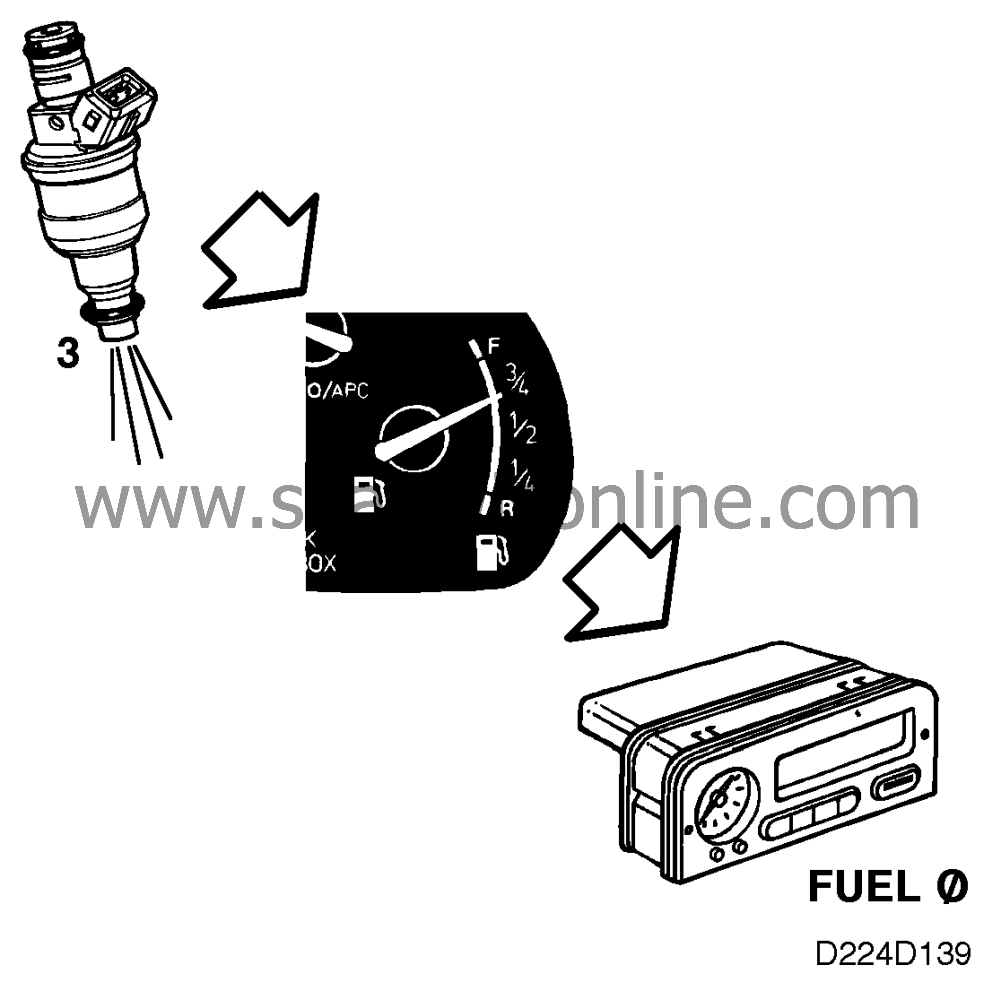Fuel injection
| Fuel injection |
Injectors
The injectors are of the solenoid type with needles and seats and open when current flows through the coil and close by means of a powerful spring when the current is broken.To obtain the best possible combustion and therefore cleaner exhaust gases, the injectors are provided with 4 holes which ensure good fuel distribution.
The fuel jets are very precisely set (two jets on each intake valve). This makes the fixing of the injectors very important. To ensure that this is done properly, the injectors are fixed in pairs in special mounts between cylinders 1-2 and cylinders 3-4.
The injectors receive their voltage from the main relay, whilst the ECM grounds the injectors as follows:
| • |
injector 1 is grounded via pin
3
|
|
| • |
injector 2 is grounded via pin 4
|
|
| • |
injector 3 is grounded via pin 5
|
|
| • |
injector 4 is grounded via pin 6
|
|
Pre-injection
When the ignition is switched on both the main relay and the fuel pump relay operate for a few seconds. As soon as the engine control module senses that the crankshaft has begun to rotate, coolant temperature dependent fuel injection takes place through the 4 injectors simultaneously. This enables short starting times to be achieved.If the engine is started and shortly afterwards switched off again, a fresh pre-injection sequence will be obtained if 45 seconds is allowed to elapse with the ignition switched off.

Calculation of fuel injection time
To determine how much fuel has to be injected into each intake manifold, the ECM calculates the air mass drawn into each cylinder.The calculation is performed as follows: (each cylinder in the B204L engine has a capacity of 0.5 litres): Half a litre of air having a certain density has a definite weight. Its density is calculated on the basis of intake manifold pressure and temperature.
The ECM keeps the injection valve open until the correct amount of fuel has been injected in relation to the measured air mass.
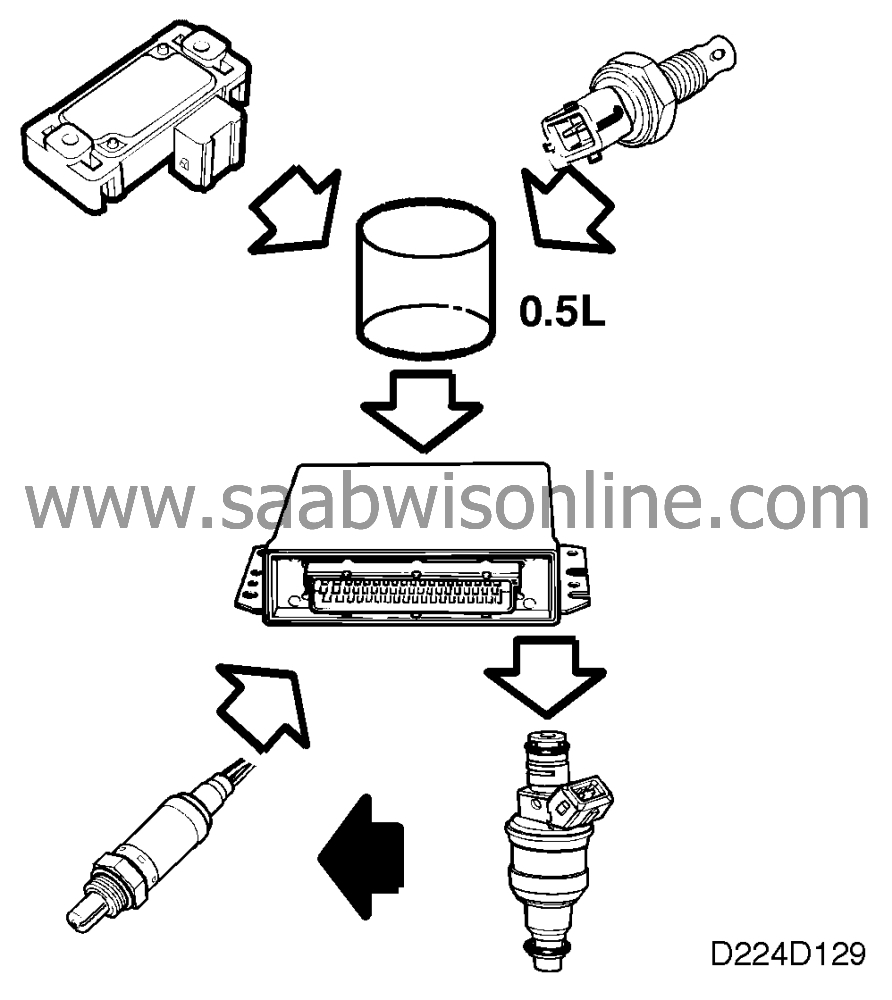
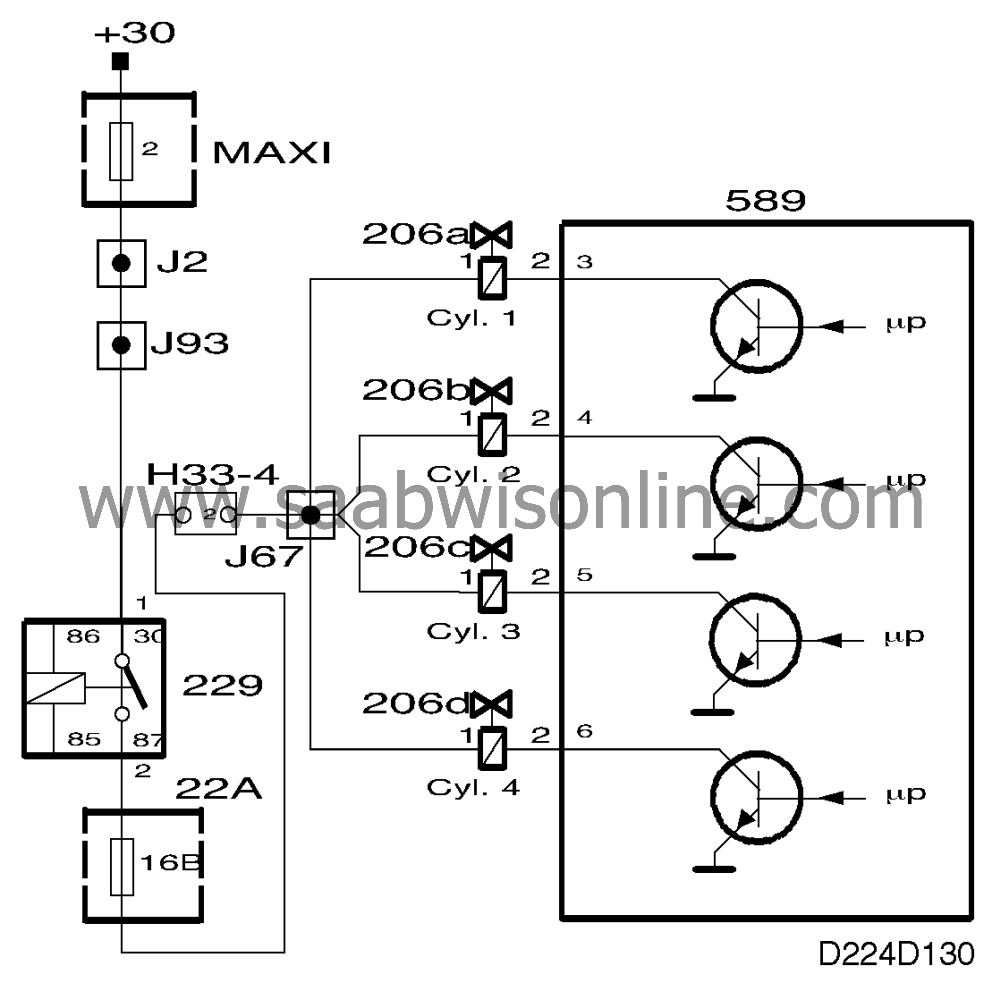
By means of the front heated oxygen sensor, fuel injection time is corrected so that Lambda = 1.0 is obtained. The closed loop is disconnected during heavy acceleration and full-load enrichment is activated for maximum performance. A richer mixture is supplied during acceleration and a leaner mixture during deceleration. For cold starting and during the engine warm-up period before the closed loop is activated, coolant temperature dependent fuel enrichment takes place.
With a hot engine and normal battery voltage, injection times vary between about 2.5 ms at idling speed and about 18 ms at wide open throttle.
Closed loop
For the three way catalytic converter to function optimally, the fuel-air mixture must be stoichiometric.This means that the mixture must be neither too rich nor too lean but consist precisely of 14.7 kg of air to 1 kg of fuel (Lambda = 1).
For this reason the system is equipped with an oxygen sensor mounted in the front section of the exhaust pipe. This sensor is connected to pin 23 of the electronic control module and grounded via pin 47.
The engine's exhaust gases pass the oxygen sensor and their oxygen content is measured through a chemical reaction. The output voltage of the oxygen sensor is proportional to the current oxygen content.
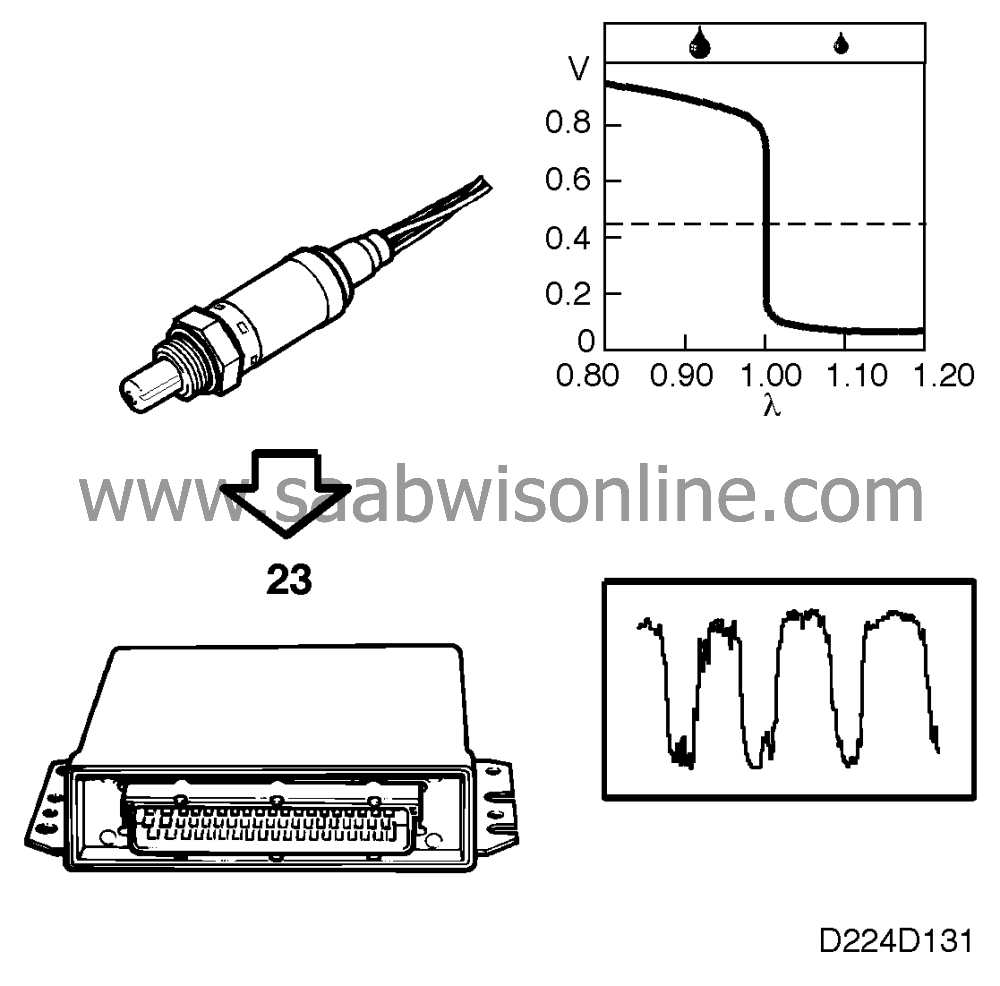
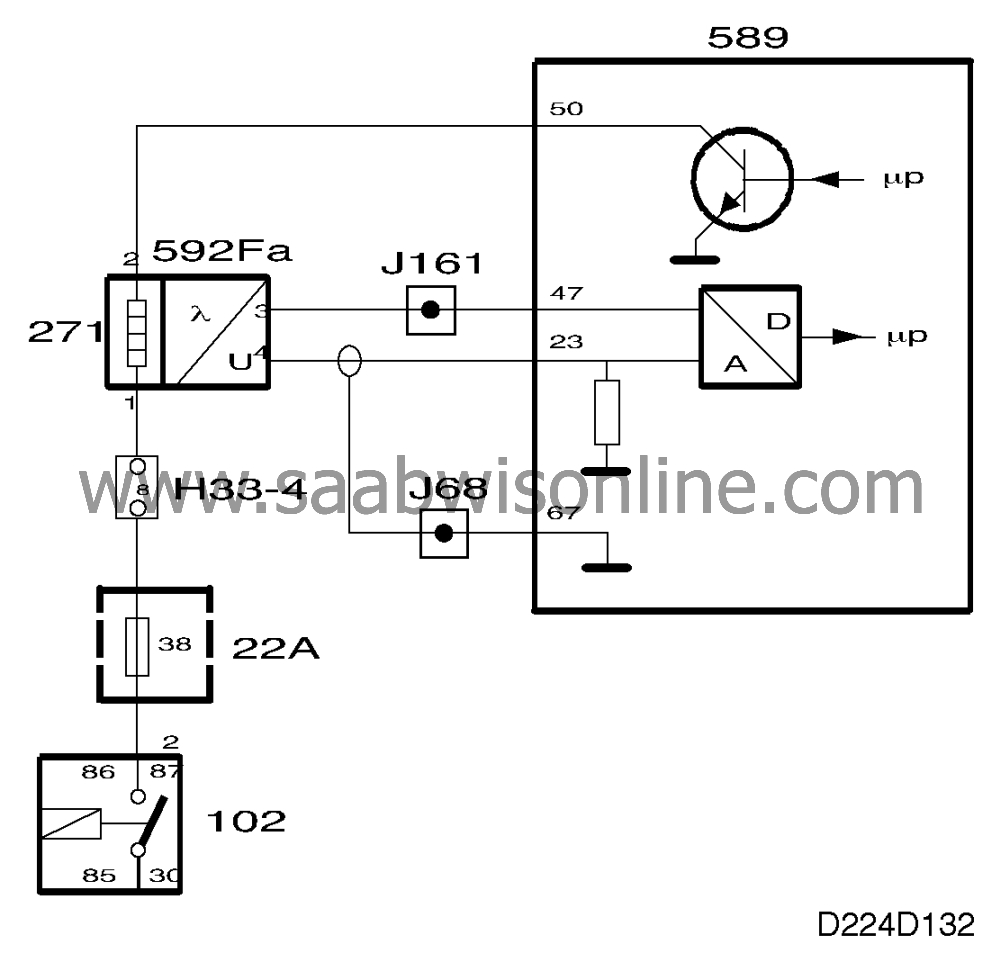
| Important | ||
|
The oxygen sensors obtain reference oxygen from the ambient air via the connecting cables. For this reason, contact cleaner or grease must not be used on the oxygen sensor contacts. |
||
If the engine is running on a rich mixture (Lambda below 1), the output voltage of the sensor will be about 0.9 V.
If the engine is running on a lean mixture (Lambda above 1), the output voltage of the sensor will be 0.1 V. The sensor output voltage changes very quickly once Lambda exceeds 1.
The engine control module continuously corrects the fuel injection time so that Lambda = 1 is always obtained.
In order to produce a voltage as soon as possible after starting, the oxygen sensors must be preheated. The preheating circuit is supplied with current (B+) from the fuel pump relay via fuse 38 and grounded via pin 50 of the engine control module. The engine control module estimates the temperature of the exhaust gases on the basis of load and engine speed. Preheating is disconnected at high exhaust gas temperatures.
Closed loop is activated 640 engine revolutions after starting if coolant temperature exceeds 18°C (64°F) under partial load or 32°C (90°F) at idling speed.
| Note | ||
|
The oxygen sensor before the three way catalytic converter is called the front heated oxygen sensor or "Oxygen sensor 1". The oxygen sensor after the three way catalytic converter is called the rear heated oxygen sensor or "Oxygen sensor 2". |
Adaptation
Due to shortage of space, only two pressure columns are shown in the figure above.The engine control module first calculates the fuel injection duration on the basis of intake manifold pressure and temperature.
Fuel injection duration is subsequently multiplied by a correction factor which is dependent on pressure and engine speed. It is obtained from the main fuel matrix and must be used to correct the fuel injection duration because the volumetric efficiency of the engine changes with engine rpm.
By means of the closed loop, final correction then takes place so that Lambda = 1 is obtained.
The closed loop can adjust the calculated fuel injection time by ±25%%.
By means of the closed loop the electronic control module can change the correction factors in the main fuel matrix so that good driveability, fuel consumption and exhaust emissions will be obtained even when the closed loop is not activated. That is called adaptation.
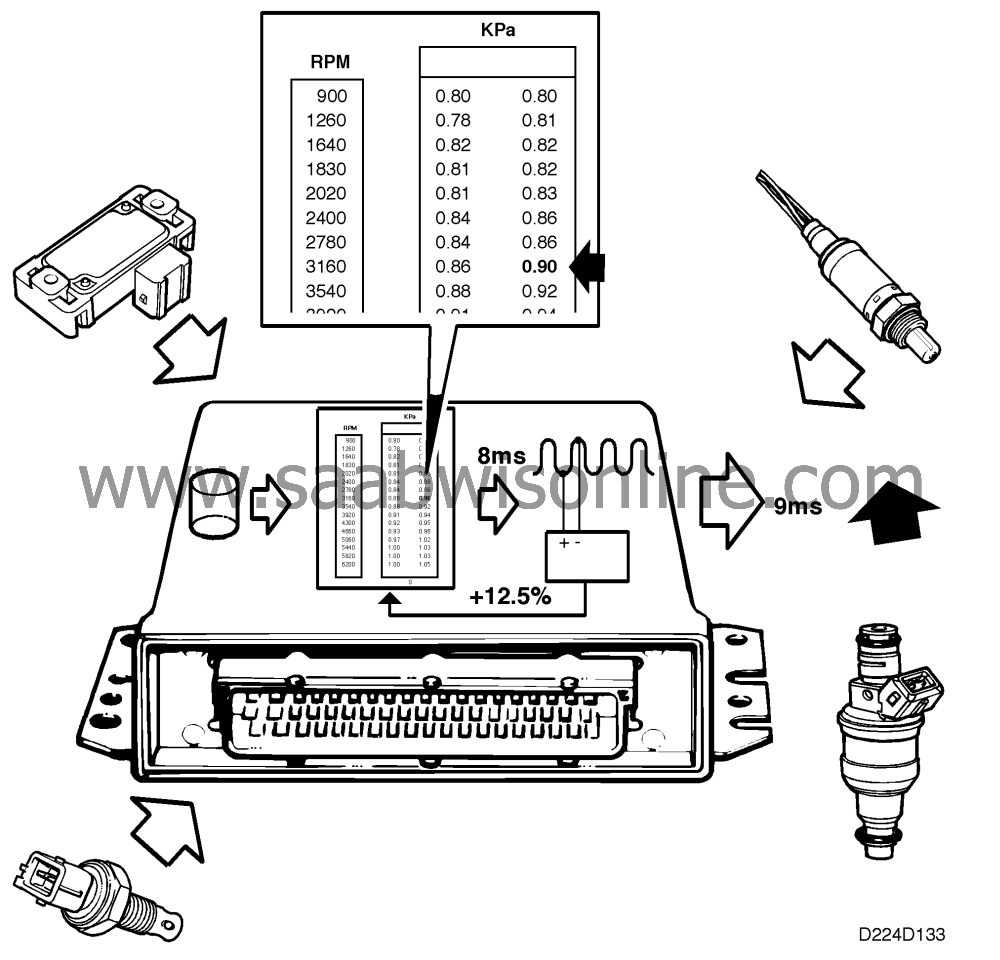
Point adaptation
If the engine control module calculates the fuel injection duration as 8 ms but the closed loop adjusts it to 9 ms because the car's fuel pressure is somewhat low, the engine control module will "learn" the new fuel injection time. It accomplishes this by changing the correction factor for the relevant engine speed and load point in the main fuel matrix so that the result will be a fuel injection time of 9 ms. In this example, the new correction factor will be 0.90 x 9/8 = 1.01 (see Fig. above).Point adaptation can change the points in the main fuel matrix by ±25%% provided that the closed loop is activated, the temperature of the coolant is above 64°C (147°F) and the EVAP canister purge valve is not in operation.
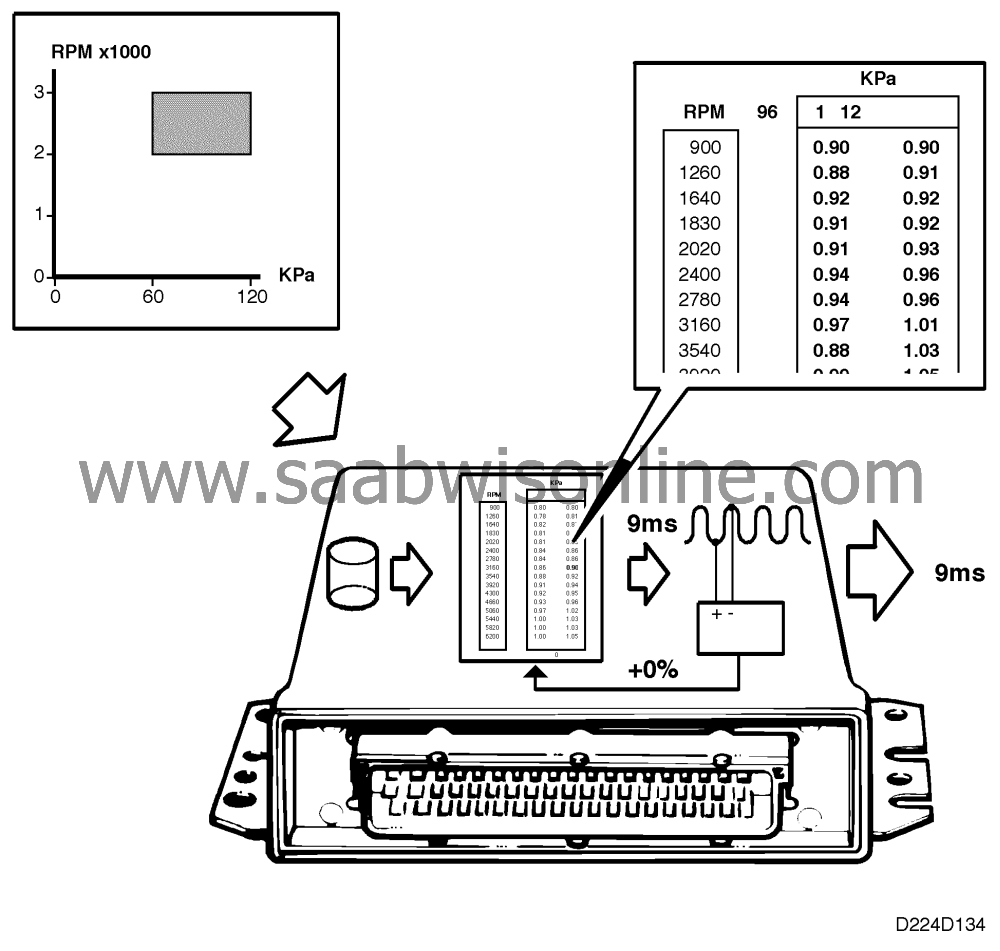
Global adaptation
On M96 (On-Board Diagnostic II) and later models, global adaptation takes place while the car is being driven.When the engine is running within defined load and rpm limits (60-120 kPa and 2000- 3000 rpm), no point adaptation will take place. All points in the fuel matrix are corrected instead. This is called global adaptation. In other respects, the conditions for global adaptation are the same as for point adaptation.
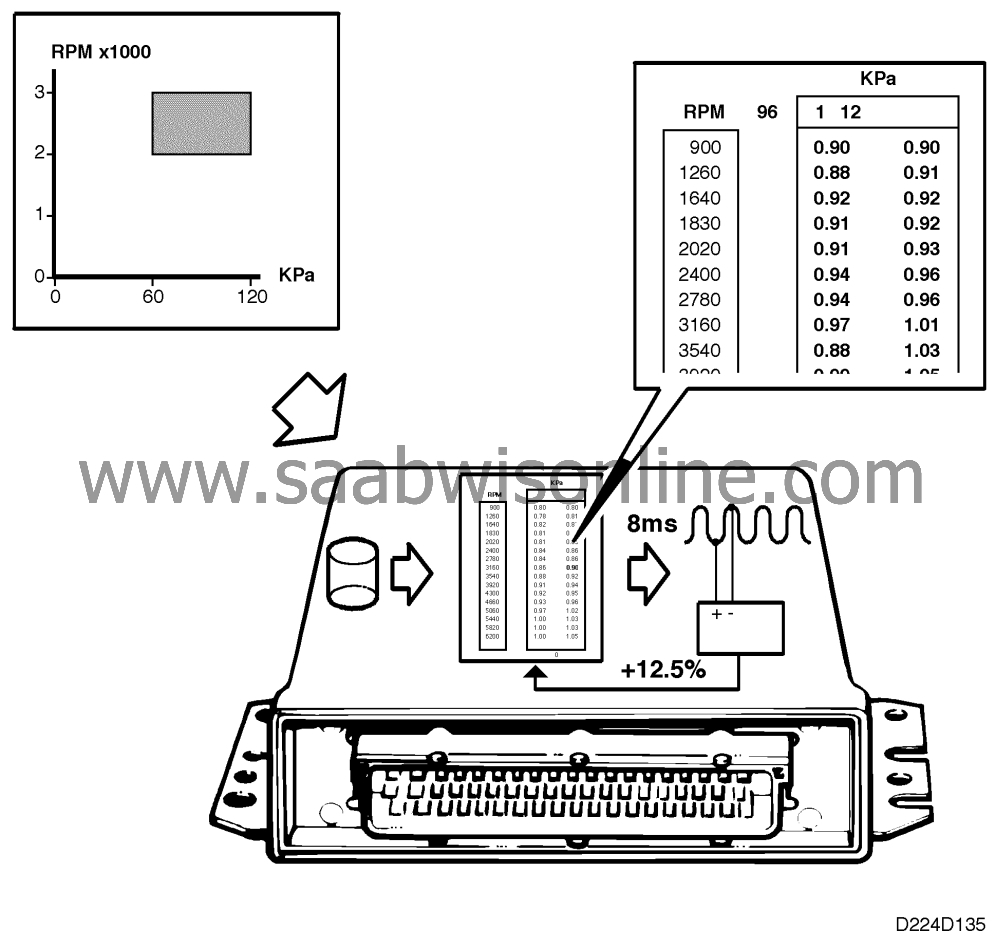
Rear heated oxygen sensor (after three way catalytic converter)
An oxygen sensor is mounted in the exhaust system after the three way catalytic converter for the purpose of diagnosing it.The oxygen sensor is connected to pin 70 of the electronic control module and grounded via pin 47.
The sensor preheater is supplied with current (B+ circuit) from the fuel pump relay via fuse 38 and grounded via pin 51 of the electronic control module. The electronic control module cuts in the preheater when coolant temperature exceeds 50°C (122°F). The preheater is turned off when the estimated exhaust temperature is high (heavy load and high rpm).

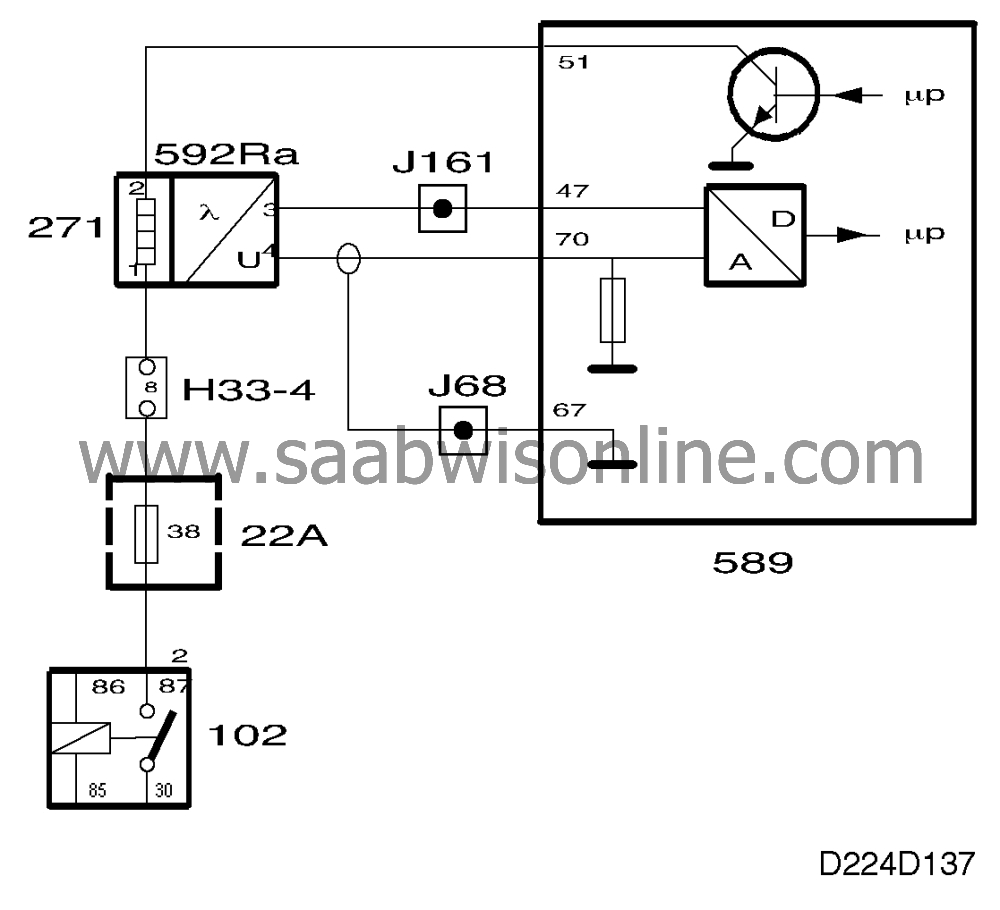
To improve exhaust emissions still further, the value from the sensor is used to correct the closed loop. The most favourable emission values are obtained when the oxygen sensor voltage is 0.6 V.
If sensor voltage is 0.3 V, for instance, the engine is running on a slightly lean mixture. The closed loop will then be corrected so that the fuel-air mixture is kept rich for a longer time than it is kept lean, thus increasing the sensor voltage.
| Important | ||
|
The oxygen sensor obtains reference oxygen from the ambient air via the connecting cables. For this reason, contact cleaner or grease must not be used on the oxygen sensor connector. |
||
Fuel shut-off
With the throttle completely closed and an engine speed above 1900 rpm in 3rd, 4th and 5th gear, fuel shut-off takes place after a certain delay (about a second or so).On cars with automatic transmission, fuel shut-off takes place in all gears.
The injectors are re-activated when engine speed drops below 1400 rpm.
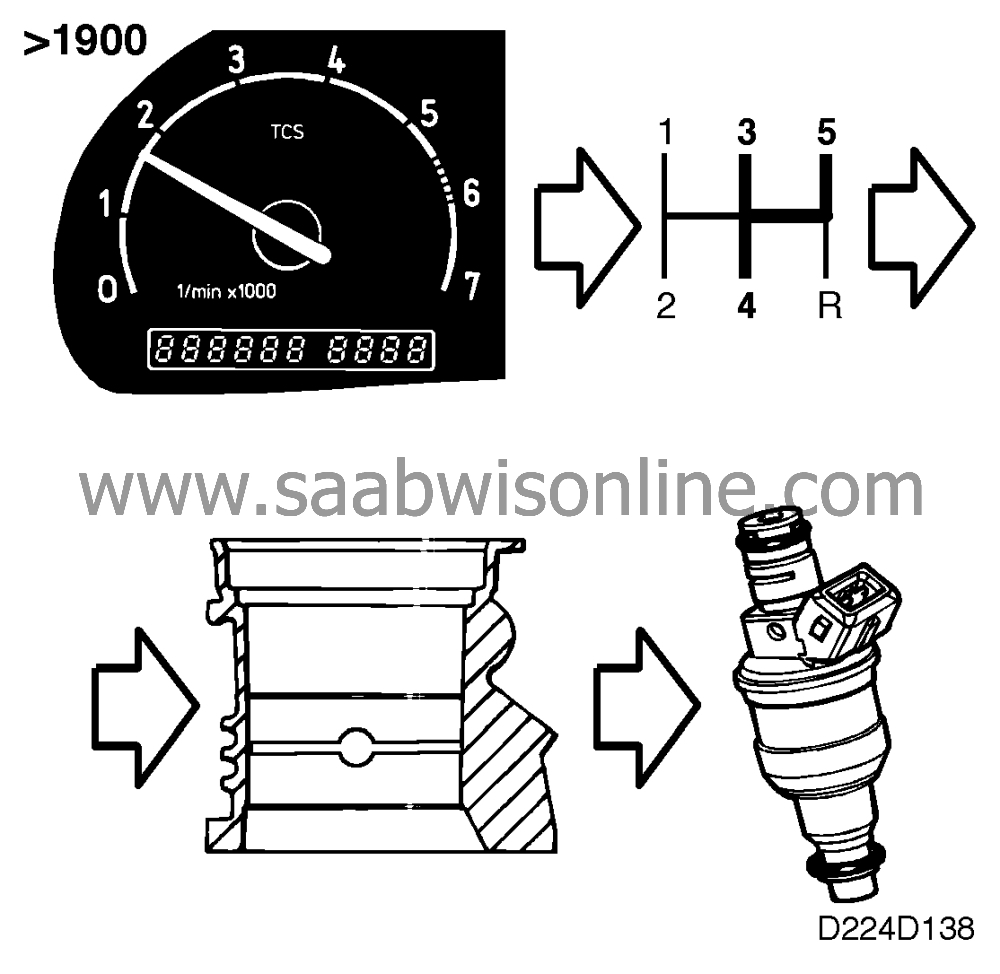
Fuel consumption
The lead from the ECM to injector 3 is also connected to the main instrument display panel, which calculates fuel consumption from the length of the fuel injection pulses. Fuel consumption is used to obtain an accurate picture of the level in the fuel tank and for calculating average fuel consumption in the SID.